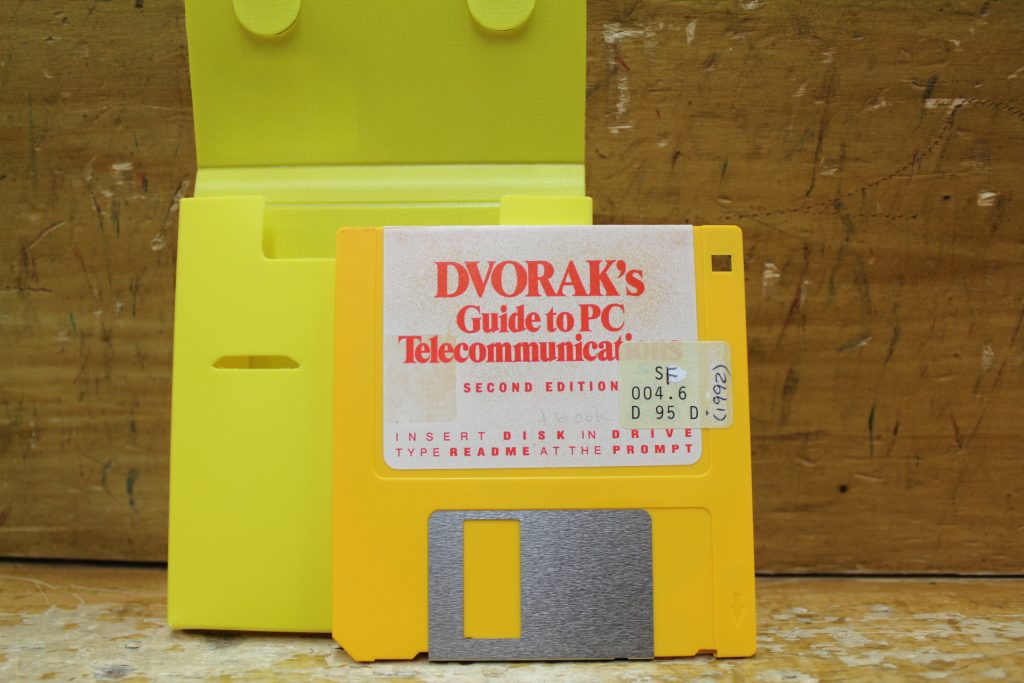A rapidly growing body of materials with significant cultural value are ‘born digital.’ Galleries, libraries, archives and museums (GLAMs) are increasingly called upon to move born-digital materials that are stored on removable media (e.g. floppy disks, flash drives, CD-ROMs, hard drives) into more sustainable preservation environments.
This can involve media that are already in their holdings (e.g. disks stored in boxes along with paper materials), as well as materials that they are now acquiring for the first time from individual donors or other producers. Materials on these media can range from office documents and photographs to email, web materials and complex interactive software products.
GLAM professionals must be prepared to extract digital materials from removable media in ways that reflect the rich metadata and ensure the integrity of the materials. They must also support and mediate appropriate access: allowing users to make sense of materials and understand their context, while also preventing inadvertent disclosure of sensitive data.
Digital forensics tools and methods
There has been a significant shift in recent years toward the adoption of digital forensics tools and methods by GLAMs, in order to meet these goals. These activities include creating disk images; extract data and metadata from disks or directories; scanning bitstreams for the presence of potentially sensitive data values; characterize the contents of disks; and perform other practical tasks, such as scanning for viruses, finding duplicate files, mounting forensically packaged disk images, generating cryptographic hashes, and viewing hexadecimal representations of bitstreams.
There are many software products that were designed for the digital forensics industry (focusing primarily on uses in criminal investigations and civil law suits) that GLAMs can adopt for their own purposes, and many have done so. Examples include the open-source Autopsy suite from Basis Technology and the proprietary Forensic Toolkit (FTK) from AccessData.
GLAM application
In recent years, there has been a lot of work on both identifying the specific needs and requirements of GLAMs in the application of digital forensics methods, as well as developing and documenting software designed specifically for them. The application of digital forensics methods in GLAMs has been substantially advanced and facilitated by several projects funded by the Andrew W. Mellon Foundation. These have included:
- Computer Forensics and Born-Digital Content in Cultural Heritage Collections project, which resulted in a Council on Library and Information Resources (CLIR) report and a two-day symposium on the topic in College Park, Maryland in May 2009
- Digital Acquisition Learning Laboratory (DALL) at UNC SILS, which established and share lessons about the implementation of digital forensics education at the graduate level using commercially available software
- the BitCurator project, which has packaged and disseminated an open-source software environment that allows users to apply digital forensics methods to collections and helped to cultivate a community of professionals who are applying digital forensics tools and methods in GLAMs
- the BitCurator Access project, which has developed tools to assist GLAMs in providing web-based and local access to born-digital materials held on disk images, development of redaction tools, and building connections to emulation environments.
Member institutions of the BitCurator Consortium (BCC) are playing a pivotal role in this work, by sharing resources and ideas, organizing professional events, stewarding documentation efforts, and helping to define the future direction of open-source software development efforts. Anyone (not just BCC members) can also join and contribute to the BitCurator Users list, which is an active forum for exchange of information and advice.
The technical and professional pieces are in place for GLAMs of all types and sizes to use digital forensics tools and methods to improve their practices and better ensure meaningful access to born-digital materials. Future challenges relate primarily to incorporating such methods into larger institutional procedures and workflows. There are already many useful workflow examples to build from, and I would encourage others engaged in such work to share their own. In such an emerging area of professional practice, the best way to make progress is to do so together.
This post is part of Born Digital 2016, the inaugural digital preservation week – an initiative of the National and State Libraries of Australasia raising awareness of the importance of preserving digital content for the public good.


